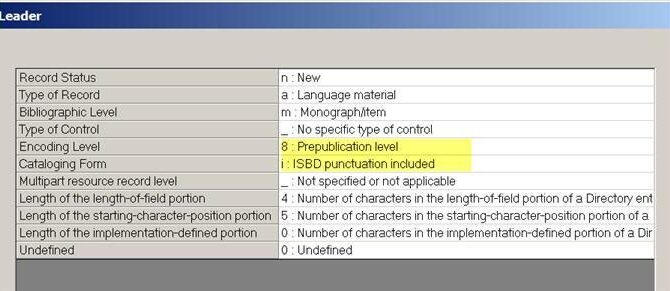Introduction
Golf is a sport that demands precision and strategic thinking, making it essential for players to grasp scoring techniques to enhance their performance on teh course. This article explores various factors that contribute to a golfer’s ability to achieve lower scores, focusing on key elements such as shot selection, course management, and personal skill evaluation. These aspects not only influence a player’s strategy but also shape their mental approach to the game.Effective shot selection highlights the necessity of making informed choices based on individual strengths and the specific challenges posed by each hole. When combined with smart course management—navigating unique features while avoiding hazards—golfers can significantly improve their efficiency on the course. Additionally, assessing personal skills—from swing mechanics to mental toughness—enables players to identify areas for advancement.
This article aims to integrate these components into a cohesive framework for golfers looking to refine their techniques and reach peak performance levels. by applying practical strategies and corrective actions,players can enhance both their scoring potential and overall enjoyment of golf. We aspire to provide valuable insights for both beginners and seasoned golfers navigating the complexities of golf scoring effectively.
The Importance of Shot Selection in Golf Scoring
Choosing the right shots is crucial in determining how well a golfer performs during play. This involves selecting appropriate clubs while weighing risks against potential rewards associated with each stroke. Factors like distance from the target, wind conditions, and possible hazards must be evaluated so that golfers can make decisions aligned with their abilities.
A strategic approach towards shot selection also enhances overall course management skills. As an example, when confronted with a challenging pin position, opting for safety by targeting the center of the green rather than aggressively aiming at the flag may yield better results over time by reducing high scores.
- recognizing personal strengths versus weaknesses
- Understanding layout variations across holes
- Identifying opportunities for effective scoring
The following table illustrates different approaches in specific scenarios:
| Shot Type | Risk Level | Potential Scoring Impact | |
|---|---|---|---|
| Aggressive Fade towards pin location | High Risk | -1 or more (eagle or birdie) | |
| Cautious shot aimed at center green area | Low Risk | Par or +1 | |
| Laying up before hazard area | Medium Risk | Par or birdie possible<td |
this comparison shows that while aggressive shots may lead to notable gains, they also come with higher chances of negative outcomes. A balanced strategy emphasizing thoughtful decision-making alongside an awareness of one’s capabilities is vital for consistently improving golf performance.
Course Management Strategies for Lower Scores
A thorough understanding of effective course management plays an integral role in achieving lower scores in golf. Recognizing one’s own strengths and weaknesses greatly influences decision-making throughout play.Adopting a strategic mindset involves evaluating each hole’s design while selecting shots that minimize risk.
- Tapping into strengths:Select reliable clubs based on past successes.
- Aiming safely:When encountering hazards , target broader areas instead.
- evaluating risk vs reward :Determine if potential benefits from risky shots outweigh consequences .
- Yardage analysis :Utilize distance markers effectively when choosing clubs.
- Trajectory control :Consider optimal trajectories not just reaching targets but minimizing environmental impacts too .
- Post-shot reflection :evaluate outcomes after every stroke so you learn & refine future decisions accordingly.
- Gross Score: The total number of strokes taken during a round without any adjustments.
- Net Score: The gross score adjusted for the player’s handicap. Formula:
- Net Score = 80 – 10 = 70
- Length of the course: Longer courses may require more strategic shot placement.
- Terrain: Hills and valleys can add difficulty; learn how to adapt your swing accordingly.
- Weather Conditions: Wind and rain can affect ball trajectory; adjust your club selection as needed.
- Driver: Best for long, open holes where distance is key.
- Irons: Ideal for approach shots to the green.
- Wedges: Used for short, delicate shots around the green.
- Know Your Strengths: Play to your strengths rather of forcing challenging shots.
- Assess Risks vs. Rewards: Always evaluate the risk of a shot against potential benefits.
- Plan Ahead: Before each hole, visualize your shots and the best way to approach them.
- Use Par as a Guide: Aim to play conservatively on par 4s and par 5s.
- Hole by Hole Strategy: Tailor your approach for each hole based on your analysis.
- Stay Flexible: Adapt your strategy based on live conditions during play.
- Scores and Stats: Record gross and net scores for each game.
- Shot Breakdown: Document types of shots used and their outcomes.
- course Conditions: Note how different conditions affect your game.
- Improved mental game through increased focus and confidence.
- Enhanced consistent performance during competitive play.
- Greater self-awareness for targeted areas of improvement.
- Pre-Round preparation:
- On-Course Adjustments:
- Post-round Reflection:
Diligent planning is essential when incorporating systematic approaches into your game plan . Familiarize yourself with conditions such as green speeds , weather impacts , etc., since these factors significantly affect your strategy .Key considerations include :
Additionally , tracking performance through detailed statistics helps highlight areas needing improvement : below are some key metrics worth monitoring :
Metr ic
| Description
| Description
| Description
|
ConclusionMastering golf performance through strategic scoring insights requires a foundational understanding of scoring rules, smart shot selection, and effective course management. By continually analyzing and adjusting your approach, improvement is not just achievable but also enjoyable. Incorporating these insights into your game will empower you to unlock your best performance on the course. You might be interested in …
Instructional Insights into the Golfing Virtuosity of Jack NicklausUnveiling the Golfing Virtuosity of Jack Nicklaus Jack Nicklaus, the epitome of golfing excellence, honed his craft through a symphony of technical prowess and strategic acumen. This instructional analysis delves into his flawless swing, his immaculate course management, and his unwavering belief in himself. Nicklaus’ unique grip, a key component of his perfect tempo and rhythm, allowed for precision ball-striking. His unwavering focus on the target, coupled with strategic course planning, led to consistent birdie chances. Beyond technique, Nicklaus’ mental fortitude and discipline separated him from his peers. His ability to remain calm under pressure, combined with his unwavering belief in his abilities, propelled him to tournament victories. By studying Nicklaus’ legendary approach, golfers of all levels can enhance their swing, sharpen their decision-making, and cultivate the psychological resilience essential for success on the course. 
**Heart-Pounding Rescue: Will Casey Save Dawson from the Crumbling Garage?**In a heart-pounding twist on #ChicagoFire, the stakes have never been higher as Casey races against the clock to save Dawson from a perilous garage collapse. Can he pull off this daring rescue? Don’t miss the thrilling showdown that’s sure to keep you on the edge of your seat! #TaylorKinney #MonicaRaymund #News #Shorts 
Master Your Swing: Unlocking Golf Secrets with Lanny WadkinsIn “Refining Golf Skills: Insights from Lanny Wadkins’ Instructional Lesson,” Wadkins dives deep into the essential mechanics of a perfect swing, highlighting the importance of grip, stance, and tempo. He masterfully blends technical precision with savvy course management strategies, empowering golfers to elevate their game to new heights |
|---|



